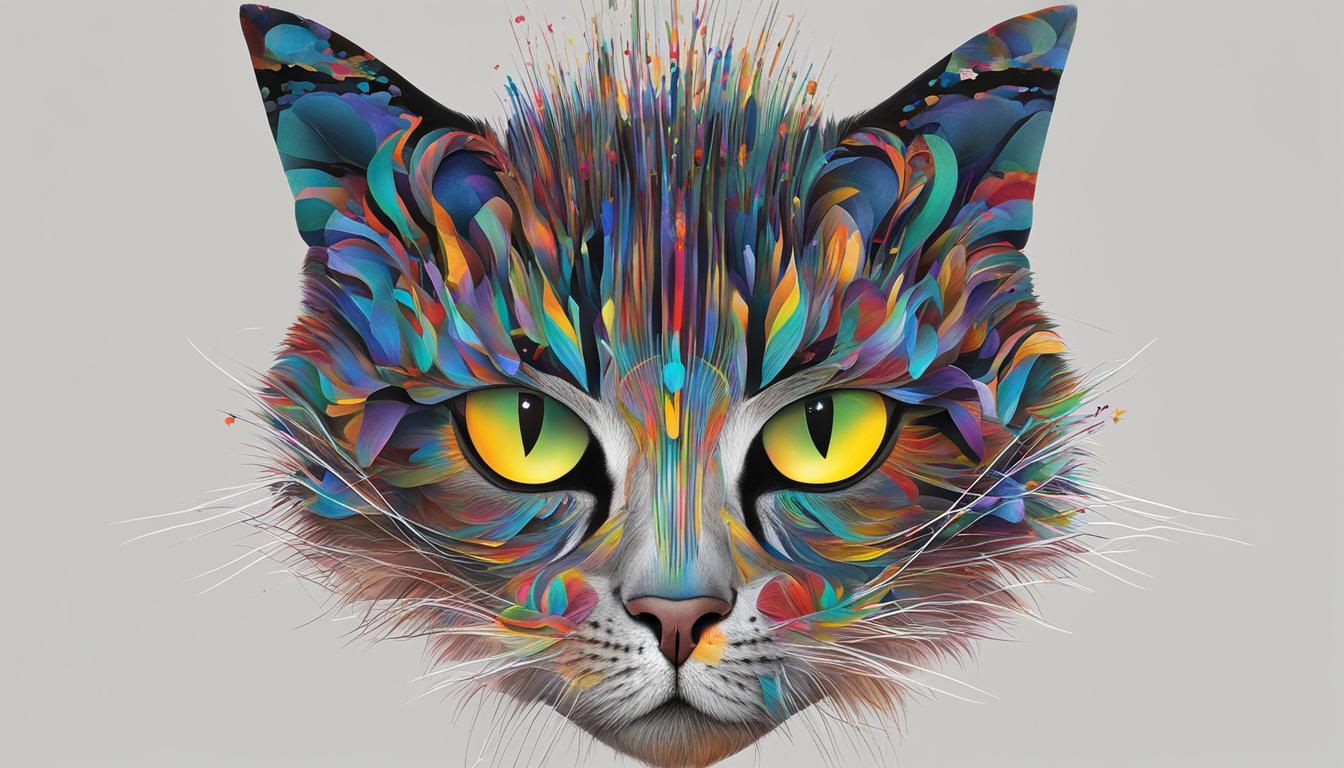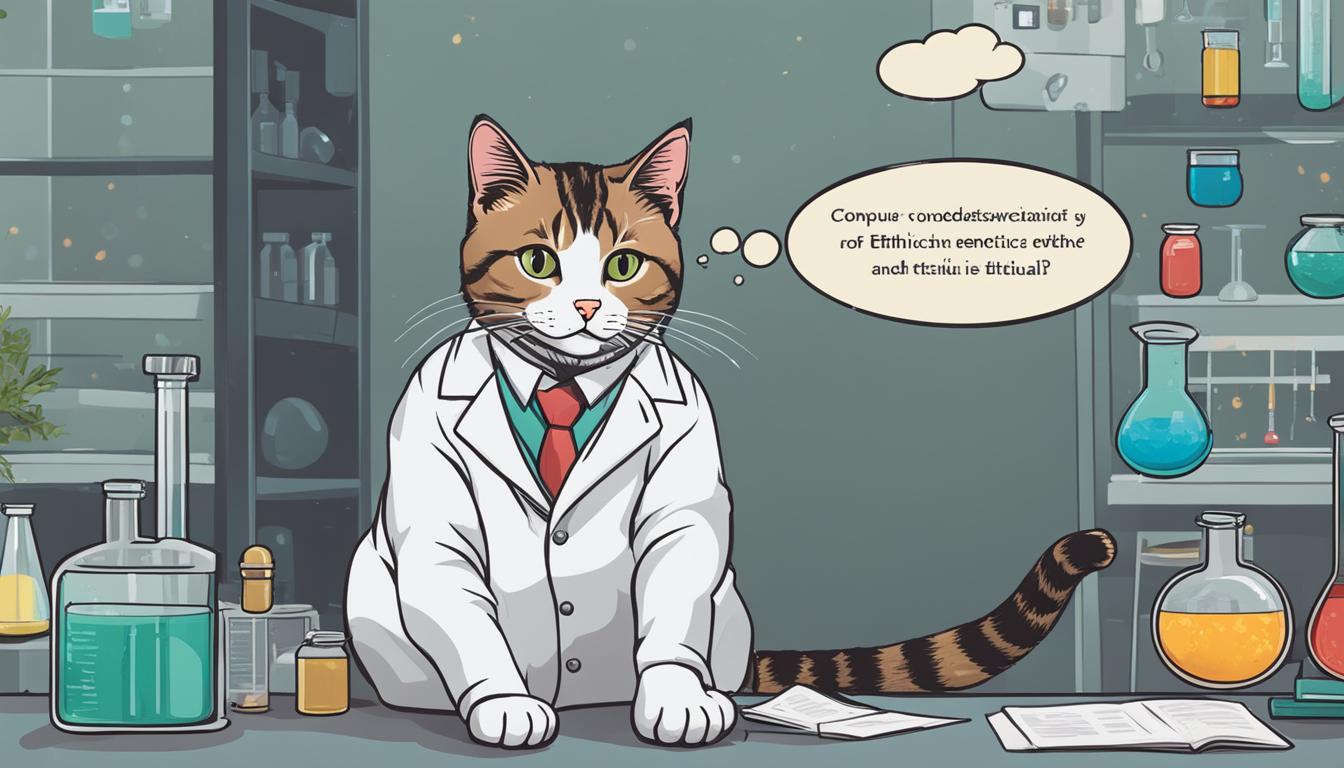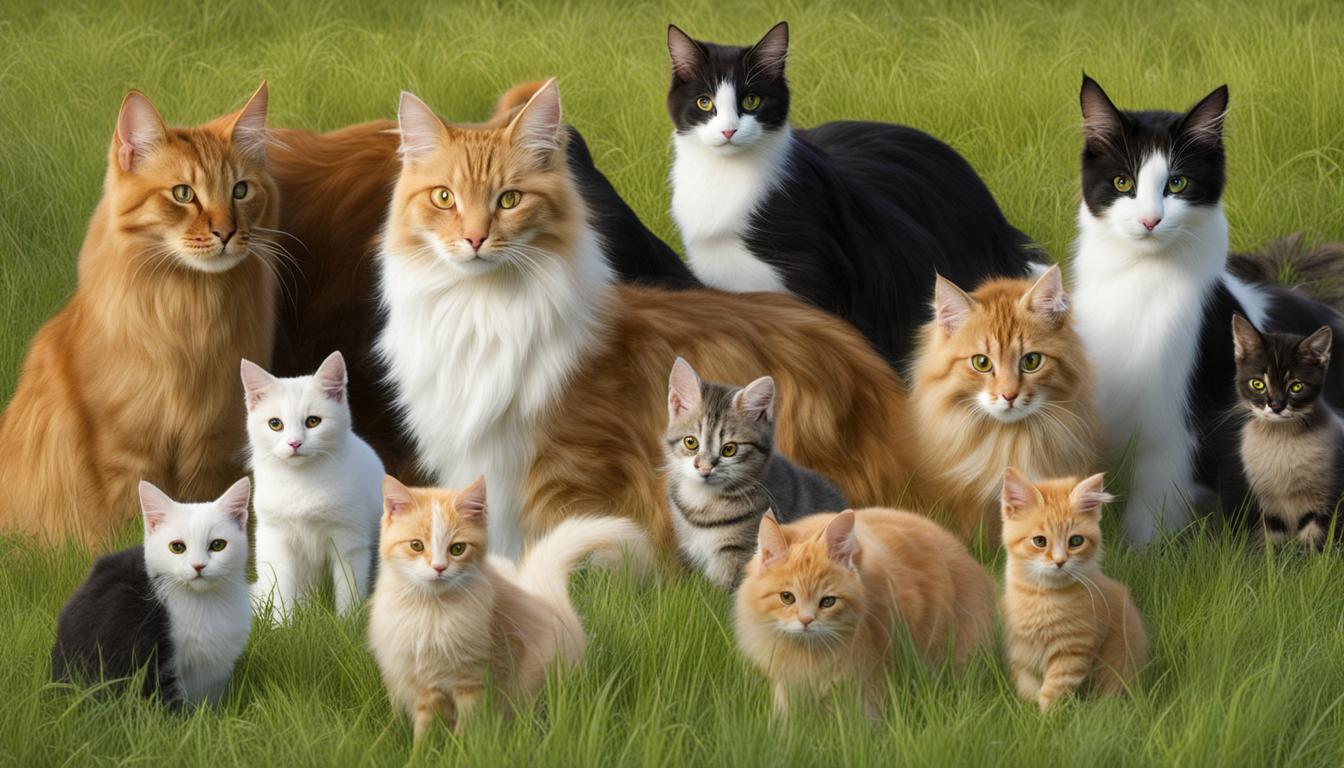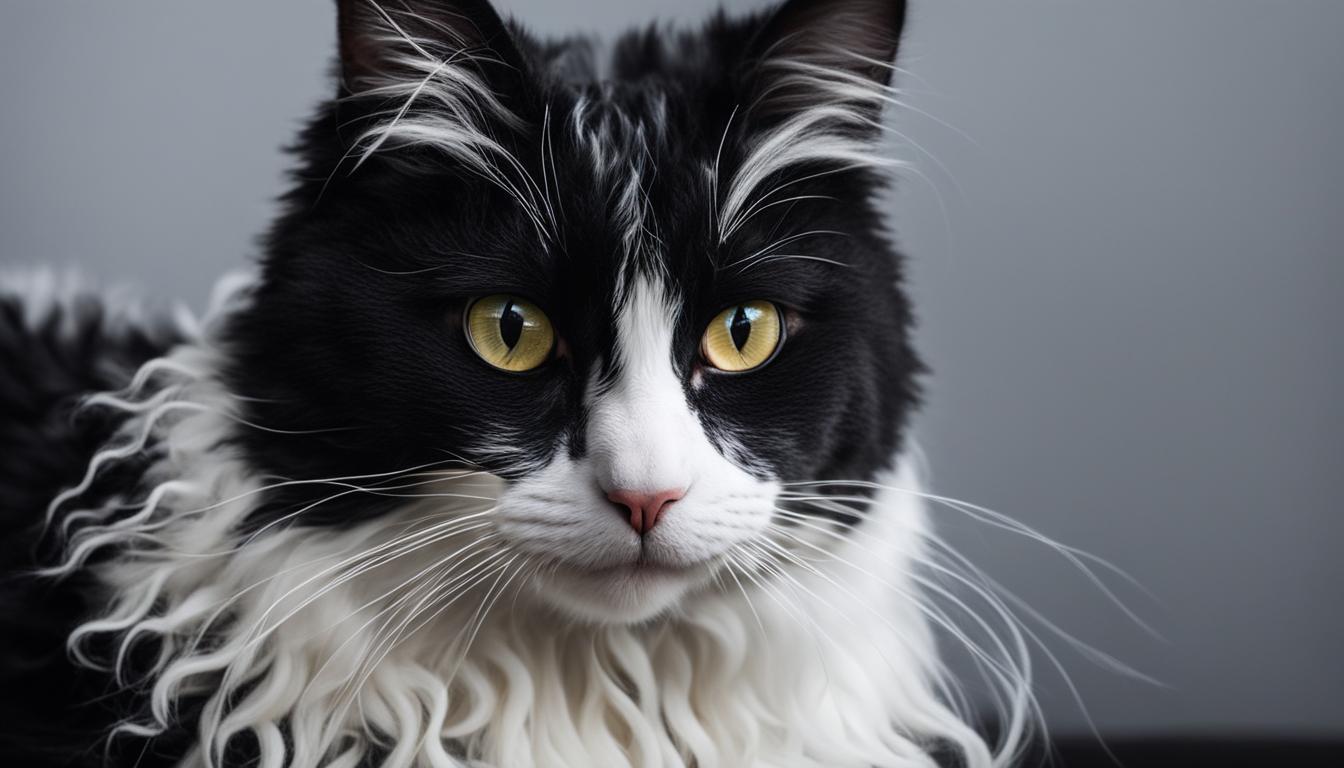Hey there, fellow cat enthusiasts! Today, I want to dive into a fascinating realm of feline behavior: vocalization. Have you ever wondered why some cats are more chatty than others? Well, get ready to unravel the genetic secrets behind those adorable meows and purrs!
As a proud cat owner myself, I’ve always been intrigued by the different sounds our furry friends make. From soft purring to fierce hissing, cats have a wide array of vocalizations that they use to communicate with us humans and their fellow feline companions.
Scientists have delved into the genetics of cat vocalization, exploring the factors that contribute to this unique behavior. They’ve discovered that hormonal imbalances, stress, genetic predisposition, and environmental influences all play a role in how and why cats vocalize.
So, let’s embark on a journey to uncover the secrets behind our feline friends’ vocalizations and gain a deeper understanding of their needs and emotions.
Key Takeaways:
- The genetics of feline vocalization play a key role in a cat’s communication.
- Cats use various sounds, including meows, purrs, hisses, and growls, to convey their emotions and needs.
- Factors such as hormonal imbalances, stress, genetic predisposition, and environmental influences contribute to cat vocalization patterns.
- Understanding your cat’s vocalizations can help you interpret and respond appropriately to their needs.
- Monitoring changes in cat vocalizations and seeking veterinary advice for excessive meowing is essential for maintaining your cat’s health and well-being.
Common Cat Vocalizations and Their Meanings
Cats communicate through a variety of vocalizations, each with its own distinctive meaning. Understanding these sounds can help cat owners better interpret their pets’ needs and emotions. Let’s explore some of the most common cat vocalizations:
Meows
Meows are versatile sounds that cats use to communicate with humans and other felines. A short, high-pitched meow is often a greeting or an expression of excitement. It’s their way of saying, “Hello, I’m happy to see you!” On the other hand, a long, drawn-out meow can indicate a desire for attention or a plea for something, such as food or playtime.
Purring
Purring is a unique vocalization that cats produce when they’re content and relaxed. It’s a low, vibrating sound that is often associated with pleasure. Cats purr when they’re being petted, cuddled, or enjoying a comfortable spot. However, purring can also occur in situations of stress or pain. So, it’s important to consider the context and accompanying body language when deciphering the meaning behind purrs.
Hisses and Growls
Hisses and growls are more aggressive vocalizations that cats use to defend themselves or express their territoriality. A hiss is a sharp, intense sound that serves as a warning to potential threats. It’s a way for cats to say, “Back off, I’m not in the mood!” Growls, on the other hand, are deeper and more guttural, displaying a higher level of aggression. These vocalizations often accompany defensive body postures, such as arched backs and raised fur.
Understanding these common cat vocalizations and their meanings can help cat owners cultivate a deeper bond with their feline companions. By paying attention to the context, body language, and accompanying behaviors, we can decipher the messages behind our cats’ meows, purrs, hisses, and growls.
| Vocalization | Meaning |
|---|---|
| Meows | Greeting, attention-seeking, or desire |
| Purring | Contentment, relaxation, or occasionally, pain or stress |
| Hisses | Intimidation, warning, or defense |
| Growls | Aggression, territoriality, or threat display |
The Mystery of Cat Mooing
While cats are known for their wide range of vocalizations, from gentle purrs to fierce hisses, there is one particular sound that has puzzled cat owners for years – cat mooing. Although cats cannot produce the same deep tones as cows, some cats, especially Siamese and Oriental Shorthair breeds, have been observed to produce a long, low-pitched tone that resembles a “moo.” This unique vocalization has captured the curiosity of cat enthusiasts and researchers alike, sparking investigations into the reasons behind this peculiar behavior.
There are several theories surrounding the phenomenon of cat mooing. One possibility is that it could be attributed to hormonal imbalances in certain cats. Hormonal fluctuations can affect a cat’s behavior, including their vocalizations. Additionally, stress and genetic factors may contribute to cat mooing. Cats experiencing high levels of stress or anxiety may exhibit unusual vocalizations as a form of expressing their discomfort. Furthermore, genetic predisposition can play a role, as certain breeds are more prone to vocalize in this unique way.
Another explanation for cat mooing revolves around attention-seeking behavior. Cats, notorious for their independent nature, often resort to different methods to grab our attention. Some cats may resort to mooing as a means of communicating their desires or simply to get some extra affection and interaction from their human companions. Boredom and frustration can also be potential triggers for cat mooing, as cats may use this vocalization to express their dissatisfaction with their environment or lack of mental stimulation.
While the exact reasons for cat mooing are still not fully understood, it remains a fascinating aspect of feline vocalizations. By studying and unraveling the mystery behind cat mooing, we gain a deeper understanding of our feline friends and their intricate communication systems. This knowledge allows us to enhance our relationships with cats and ensure their well-being and happiness.
Cat Vocalizations and the Impact of Environment and Socialization
Cat vocalizations are influenced by a variety of environmental factors and socialization experiences. Understanding how these factors contribute to a cat’s vocal behavior is crucial for cat owners seeking to provide the best care and communication for their feline companions.
The Role of Environment
The environment in which a cat is raised can greatly influence its vocalizations. Cats living in quiet and solitary environments may be less vocal compared to those exposed to a more stimulating and interactive atmosphere. A lack of environmental enrichment can sometimes lead to boredom and frustration, resulting in increased meowing or other vocal behaviors as a means of seeking attention or stimulation.
Socialization and Cat Vocalizations
Socialization plays a significant role in a cat’s vocalization patterns. Positive interactions with humans and other animals during the early stages of a cat’s life can shape its communication skills and understanding of vocal cues. Cats that have been well-socialized may display more varied vocalizations, using different sounds to express their needs, desires, and emotions.
| Environmental Factors | Impact on Cat Vocalizations |
|---|---|
| Quiet and solitary environment | Potential decrease in vocalizations |
| Stimulating and interactive atmosphere | Potential increase in vocalizations |
| Lack of environmental enrichment | Potential increase in vocalizations due to boredom or frustration |
Understanding how the environment and socialization can influence cat vocalizations is key in creating a harmonious and fulfilling relationship with our feline friends. By providing a stimulating environment, offering social interaction, and addressing any underlying issues, cat owners can help reduce excessive vocalizations and ensure their cats’ emotional well-being.
As responsible cat owners, it is important to pay attention to our cats’ vocalizations and observe any changes in their patterns. Persistent or significantly altered vocalizations, accompanied by other signs of distress, may indicate underlying health concerns that require veterinary attention. Regular check-ups can help monitor a cat’s overall health and address any potential issues before they escalate.
By considering the impact of the environment and socialization on cat vocalizations, we can enhance our understanding of our feline companions and strengthen the bond we share with them. The ability to decode their vocal cues and respond appropriately not only improves their quality of life but also strengthens the human-cat relationship, resulting in a happier and more fulfilled pet.
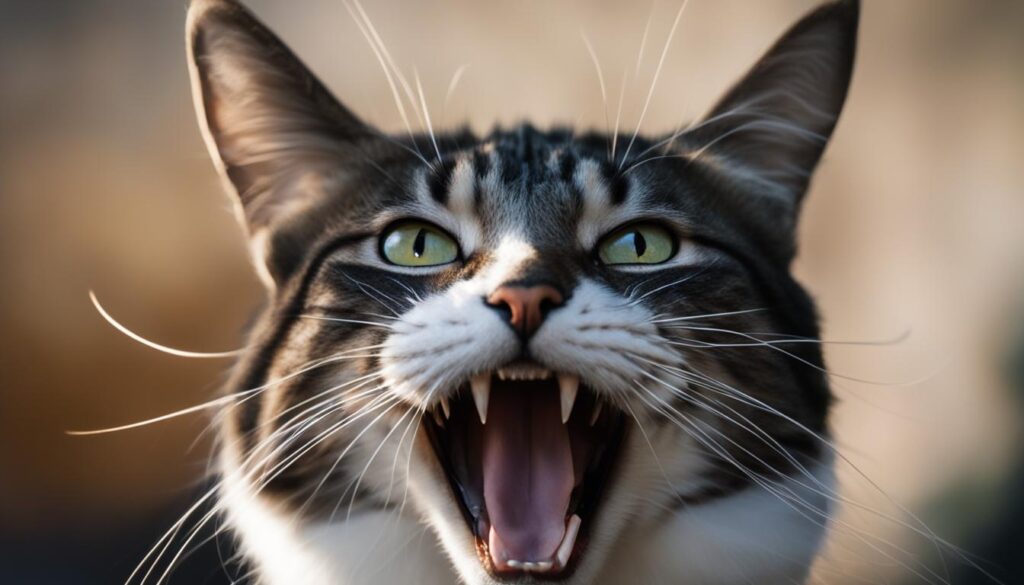
When to Be Concerned About Excessive Meowing
Excessive cat meowing can be a cause for concern and may indicate underlying issues. As a cat owner, it’s essential to pay attention to changes in your cat’s vocalization patterns and understand when their meowing signals a problem.
Changes in cat vocalization patterns can be an indication of various factors. It could be a sign of illness or pain, especially if the meowing becomes persistent and is accompanied by other signs of distress. Aging can also contribute to changes in vocalization, as older cats may experience age-related issues that affect their meowing.
Monitoring your cat’s meowing and being familiar with their normal vocalization patterns is crucial in recognizing when something is amiss. If you notice a significant increase or decrease in meowing, or if the meowing becomes excessive and out of the ordinary, it’s advisable to seek veterinary advice. A professional can assess your cat’s overall health and provide appropriate guidance or treatment.
Regular check-ups with a veterinarian are important for maintaining your cat’s well-being and catching any potential issues early on. Remember, every cat is unique, and understanding their vocalization behaviors can help you address their needs and ensure a harmonious relationship between you and your feline companion.
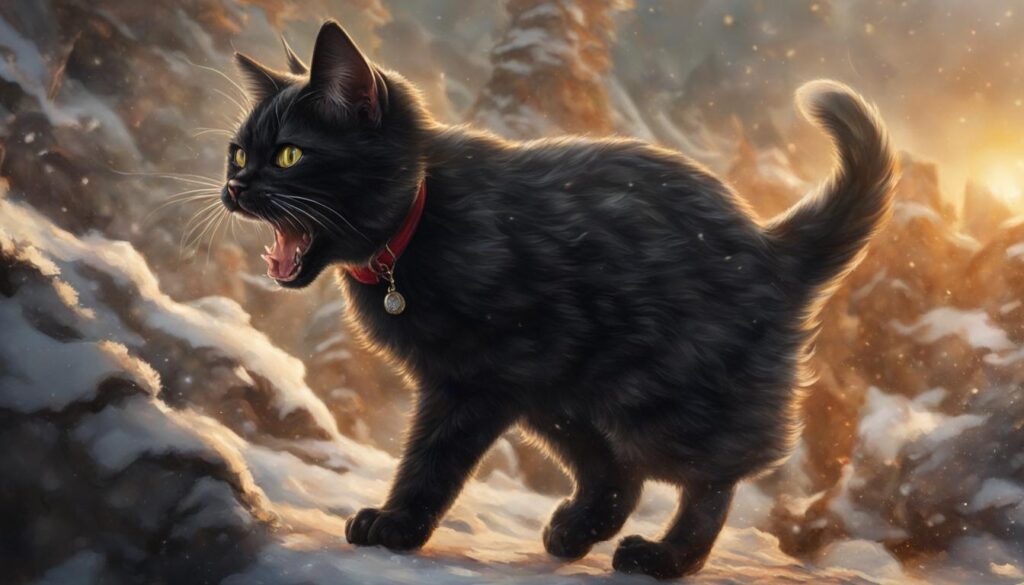
When to Seek Veterinary Advice:
- If your cat’s meowing becomes more frequent and persistent, especially if it is accompanied by other signs of distress.
- If there is a significant change in your cat’s meowing patterns, such as a sudden increase or decrease in vocalization.
- If your cat’s meowing is excessive and out of the ordinary, lasting for prolonged periods of time.
- If your cat’s meowing is accompanied by other concerning symptoms, such as lethargy, loss of appetite, or difficulty walking.
“Understanding your cat’s vocalization patterns and seeking veterinary advice when necessary can help ensure your furry friend’s health and well-being.”
Conclusion
In summary, understanding the genetics behind cat vocalizations is key to building a strong bond with our feline companions. Cats have a sophisticated communication system that involves various vocalizations, each with its own meaning. By decoding their meows, purrs, hisses, and growls, we can better understand their emotions and needs.
It is important for cat owners to recognize the importance of understanding these vocalizations. By doing so, we can provide the appropriate care and attention that our cats require. Whether it’s responding to their meows for attention or addressing their hisses as a sign of aggression, our understanding of cat vocalizations can enhance the quality of our interactions with them.
Furthermore, cat meowing can have implications beyond simple communication. Excessive meowing may indicate an underlying health issue or a need for increased stimulation. By closely monitoring our cats’ vocalization patterns and seeking veterinary advice when necessary, we can ensure their overall well-being and prevent potential problems.
To cultivate a harmonious relationship with our furry friends, let’s embrace the fascinating world of cat vocalizations. By appreciating the genetics behind their unique sounds, we can create an environment that caters to their needs, deepening the bond we share with our beloved feline companions.
FAQ
What are the different vocalizations that cats use?
Cats use various sounds like meows, purrs, hisses, and growls to communicate their emotions and needs.
How do cats use their bodies and scent to communicate?
Cats use their bodies and scent to communicate with other cats and humans.
What factors influence cat vocalizations?
Factors such as hormonal imbalances, stress, genetic predisposition, and environmental influences can influence cat vocalizations.
Why do some cats “moo” like cows?
The reasons for cat mooing are still unclear, but theories suggest it could be due to hormonal imbalances, stress, genetic factors, attention-seeking, boredom, or frustration.
How can environmental factors and socialization affect a cat’s vocalizations?
Cats raised in a quiet, solitary environment may be less vocal than those exposed to a stimulating and interactive atmosphere. Positive interactions with humans and other animals can also influence a cat’s vocalizations.
When should I be concerned about excessive meowing in my cat?
Excessive meowing can be a sign of underlying medical or health problems. Changes in a cat’s meowing patterns can indicate illness, pain, discomfort, or age-related issues.
Why is it important to understand cat vocalizations?
Understanding the genetics and factors influencing cat vocalizations is essential for cat owners to effectively communicate with their pets and address their needs and emotions.

